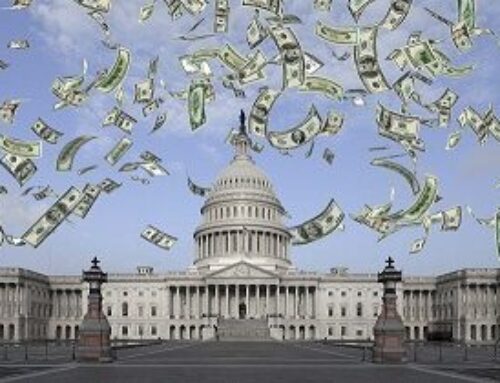Lawmakers trickling back into Washington have a lot on their plate.
Foremost is funding government operations before current spending runs out on January 19. But first, they’ll wrangle over how much to increase spending above levels already set by law in order to avoid the perennial “sequester” poltergeist. How lawmakers approach this first task may be a test of whether 2018 will produce anything.
It’s also a test of fiscal responsibility. Previous modifications of the legislatively mandated caps had (sometimes specious) offsets. We are concerned they may dispense with even this budgetary nicety this time.
It’s worth remembering how we got into this particular shade of annual budget fights. After the great recession, a nearly trillion-dollar stimulus package, and three years of $1 trillion annual deficits, the new Republican-led Congress and President Obama agreed to the Budget Control Act of 2011. In a bid to increase fiscal responsibility, the bill established a super committee in Congress to find at least $1.2 trillion in deficit reduction. When they failed to come up with so much as a dime, the law’s back-up plan kicked in and across-the-board cuts were ordered for fiscal year (FY) 2013. In addition, separate caps on defense and non-defense discretionary spending were established for each year of the next decade to achieve the targeted amount of deficit reduction.
But the goal of getting Washington to focus on making the tough decisions to budget within our means has not yet taken root. Instead, every year or two, lawmakers have come up with “last second” agreements to increase spending caps for one or two years by promising to make the tough decisions later. So the Bipartisan Budget Act of 2013 raised the total spending cap for FY2014 and FY2015 by about $62 billion in part by extending mandatory across-the-board cuts into the year 2024. The Bipartisan Budget Act of 2015 then increased FY2016 and FY2017 spending by $80 billion, again by promising additional cuts…in 2025.
In addition, lawmakers are employing ever-more creative ways of increasing spending that is not subject to these annual caps. For years lawmakers have used the now $65 billion Overseas Contingency Operations account to fund the Pentagon. By now many routine and non-emergency costs, like military construction, have migrated into this off budget account. Congress has already passed $38 billion worth of “emergency” spending to cover the costs of wildfires, hurricanes, and other natural disasters, with the House having approved an additional $81 billion. But many of the details stretch the definition of emergency: Army Corps of Engineers Construction funds with no requirement they be spent in a timely manner, Community Development Block Grant dollars for disasters as far back as Superstorm Sandy (2012), and numerous policy changes that will put taxpayers on the hook for more spending in the future.
Now, more than three months into FY2018, federal agencies still do not have a final budget. Lawmakers don’t want to follow the top-line spending levels that are set by law ($549 billion for defense and $516 billion for non-defense agencies) because this would require spending be reduced nearly one-half of one percent from 2017 levels. Oh, the humanity!
Okay, so do something different.
Don’t get us wrong. We didn’t like the BCA much either. We proposed alternative measures lawmakers could adopt that would achieve the required deficit reduction in a more targeted and intelligent way than through the caps. Take your pick: Super Cuts for the Super Committee or Sliding Past Sequestration or Silencing Sequester Scaremongers.
But the point of the BCA was to “bend the cost curve” of our nation’s ballooning debt – something needed perhaps even more than in 2011. The Congressional Budget Office projected that annual deficits will again exceed $1 trillion by 2020 – spending on the debt alone will take up 10 percent of the federal budget by 2021. We also recognize that simply targeting discretionary spending is not enough to deal with our nation’s budget challenges. Mandatory or entitlement spending (things like Medicare, Social Security, and agriculture subsidies) makes up two-thirds of the budget and will be the biggest driver of debt in future years. These programs need reforms. But any adjustment to the budget caps must be offset – either with new revenues or additional cuts.
None of this happens unless Congress gets real. You only get one bite at the reconciliation apple per budget year, so these agreements need 60 votes in the Senate. Lasting change requires bipartisan agreement and balance. It’s not easy, but that’s the job they all got elected to do.











Get Social